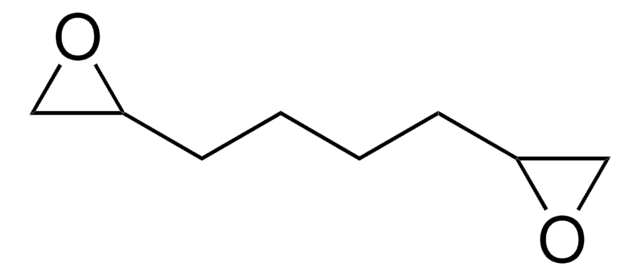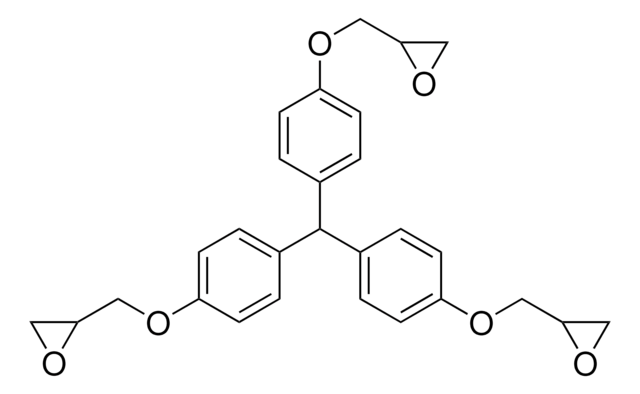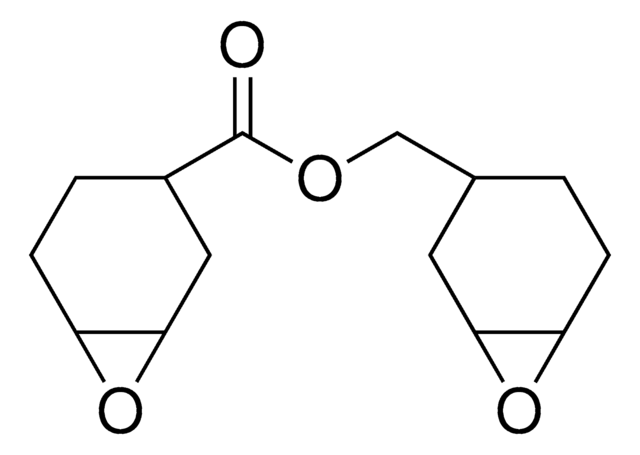124192
1,4-butanediol diglicidil éter
technical grade, 60%
Sinónimos:
1,4-Bis(2,3-epoxypropoxy)butane, 1,4-Bis(glycidyloxy)butane, 1,4-Bis(oxiran-2-ylmethoxy)butane, 1,4-Butylene glycol diglycidyl ether, Tetramethylene glycol diglycidyl ether
About This Item
Productos recomendados
grado
technical grade
presión de vapor
~10 mmHg ( 20 °C)
Formulario
liquid
concentración
60%
índice de refracción
n20/D 1.453 (lit.)
bp
266 °C (lit.)
densidad
1.1 g/mL at 25 °C (lit.)
cadena SMILES
C(CCOCC1CO1)COCC2CO2
InChI
1S/C10H18O4/c1(3-11-5-9-7-13-9)2-4-12-6-10-8-14-10/h9-10H,1-8H2
Clave InChI
SHKUUQIDMUMQQK-UHFFFAOYSA-N
¿Está buscando productos similares? Visita Guía de comparación de productos
Descripción general
Aplicación
- As a cross-linking agent to prepare hyaluronic acid dermal fillers This crosslinking process enhances the gel-like consistency of the filler, making it more durable and longer-lasting.
- As a monomer to prepare epoxy-based graphene nanocomposites that have potential applications in the field of flexible electronics, corrosion resistance coatings, and conductive adhesives. BDDE is chosen for its desirable properties such as low viscosity, good reactivity, and compatibility with graphene.
Palabra de señalización
Danger
Frases de peligro
Clasificaciones de peligro
Acute Tox. 4 Dermal - Acute Tox. 4 Inhalation - Acute Tox. 4 Oral - Aquatic Chronic 3 - Eye Dam. 1 - Skin Irrit. 2 - Skin Sens. 1
Código de clase de almacenamiento
10 - Combustible liquids
Clase de riesgo para el agua (WGK)
WGK 2
Punto de inflamabilidad (°F)
235.4 °F - closed cup
Punto de inflamabilidad (°C)
113 °C - closed cup
Equipo de protección personal
Eyeshields, Faceshields, Gloves, type ABEK (EN14387) respirator filter
Elija entre una de las versiones más recientes:
¿Ya tiene este producto?
Encuentre la documentación para los productos que ha comprado recientemente en la Biblioteca de documentos.
Nuestro equipo de científicos tiene experiencia en todas las áreas de investigación: Ciencias de la vida, Ciencia de los materiales, Síntesis química, Cromatografía, Analítica y muchas otras.
Póngase en contacto con el Servicio técnico









